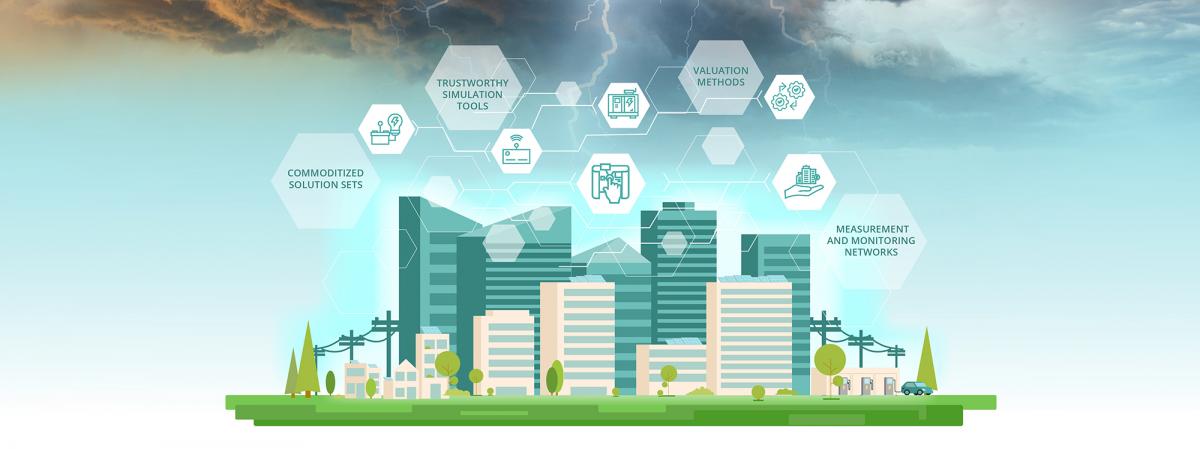Ten-Year Goal:
Create mature solutions for resilient infrastructure and vehicles to scale their adoption.
The Challenge
 Historically, DOE’s National Laboratories have pursued a portfolio of research and development focused on mitigating increases in greenhouse gas (GHG) emissions and associated adverse impacts to the natural environment. Specific to energy technologies, Berkeley Lab has led this pursuit, providing four decades of breakthroughs in energy efficiency in buildings and industry — two sectors responsible for approximately one-third of all U.S. national GHG emissions.
Historically, DOE’s National Laboratories have pursued a portfolio of research and development focused on mitigating increases in greenhouse gas (GHG) emissions and associated adverse impacts to the natural environment. Specific to energy technologies, Berkeley Lab has led this pursuit, providing four decades of breakthroughs in energy efficiency in buildings and industry — two sectors responsible for approximately one-third of all U.S. national GHG emissions.
Research Summary
Even as the evolution of our natural environment presents new challenges for adaptation and mitigation, our communities will continue to thrive, attaining dramatic increases in the quality of life. That is the vision driving this research. New technology and processes will enable our building infrastructure and its interfaces with grid and transportation systems to dynamically adapt to external stressors.
Improving quality of life and supporting the ability of community-scale infrastructure to adapt will result in tremendous economic and human health benefits.
This initiative is targeting two key impacts and associated goals:
1) Reductions in economic loss following natural disasters, achieved through:
- Improved infrastructure fortification levels (resistance to failure, time to repair)
- A reduction in the time required to return a building to a habitable state (survival)
- A reduction in the time required to restore or maintain principal building services (comfort and productivity)
2) Near-zero mortality and trauma, due to:
- Enhanced forecasting of infrastructure stressors and severity
- Robust communication and guidance systems for public response before, during, and after major events and chronic risks
- Increased investment in and adoption of resilience technologies and practices


